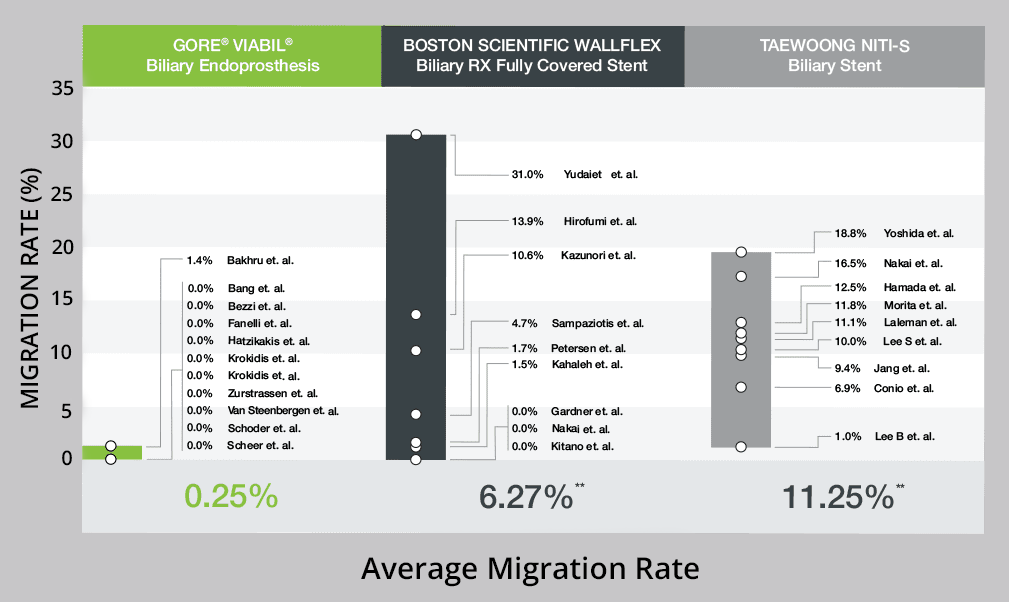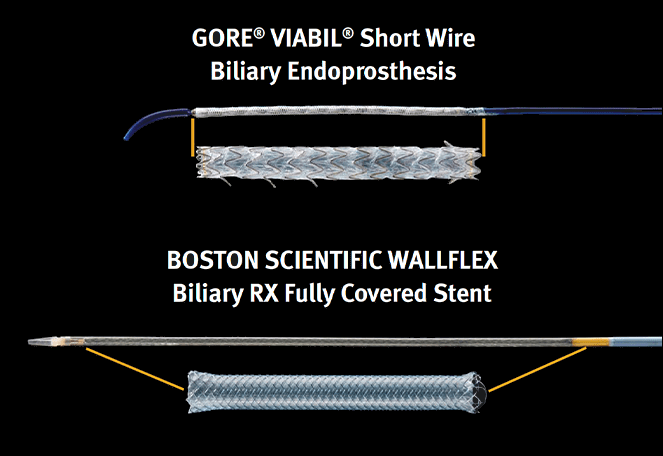Migration in Malignant Biliary Strictures
In the case of malignant biliary strictures, FCSEMS are often looked to as a form of treatment in an effort to help open up bile ducts. Because of the delicate nature of malignant strictures, it’s of the utmost importance that these FCSEMS are placed accurately and stay put—and is why stent migration is a reason for concern.
According to published studies, stent migration and sludge formation is related to the device conformability in the bile duct, which is influenced by the device’s axial force (Af). A balance of low axial force and moderate radial force (Rf) is preferred for optimal performance.
Up to 20% of FCSEMS migrate1, posing the risk of biliary obstruction, possible pain or discomfort, and infection.
But what if there was a stent that minimizes these risks?
That’s where VIABIL® comes in.
VIABIL® To The Rescue
The self-expanding GORE® VIABIL® Biliary Endoprosthesis is the only fully-covered metal stent clinically proven to minimize the risk of reintervention.
In fact, data shows that using VIABIL® leads to a 25X reduction in migration rates in malignant biliary strictures compared to other FCSEMS on the market.
 comparison chart shows 25X reduction in migration
comparison chart shows 25X reduction in migration
The fully covered anchoring fins securely hold the device within the duct to minimize the risk of migration. With a reported 0–1.4% migration rate range, this significantly outperforms BOSTON SCIENTIFIC WALLFLEX Biliary RX Fully Covered Stent migration rates, which range up to 0–13%.
Because of its variety of sizes and flexibility, VIABIL® provides the optimal combination of low Af and moderate Rf to minimize risk of migration, conforming naturally to the bile duct anatomy to help reduce the risk of sludge formation.
 comparison chart shows 25X reduction in migration
comparison chart shows 25X reduction in migration
How confident are we that VIABIL® will stay in place?
Thanks to the CONMED Biliary Assurance Program, we’ll replace VIABIL® if migration occurs.
Fill out our intake form below and reach out to your CONMED representative for more information.
References: